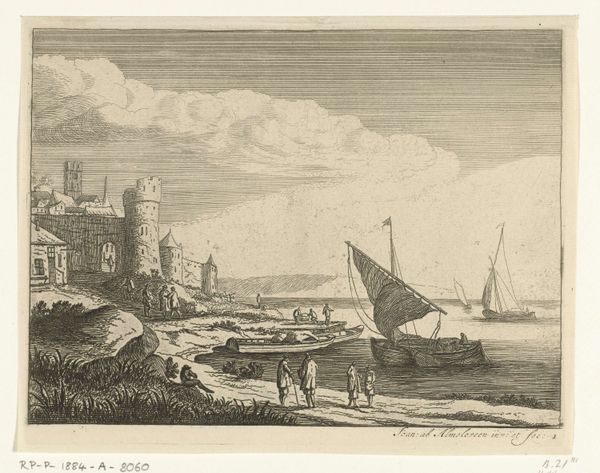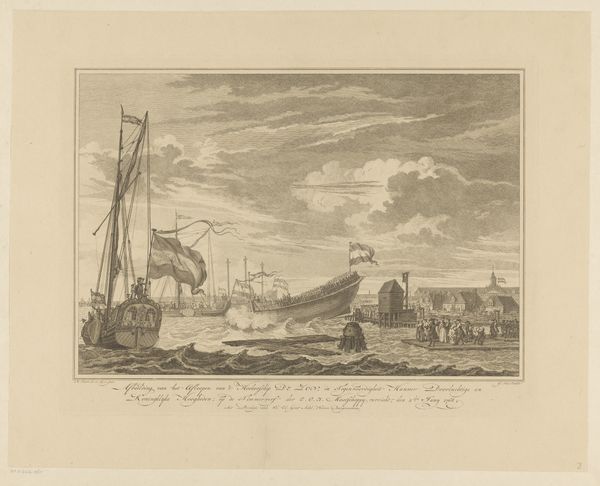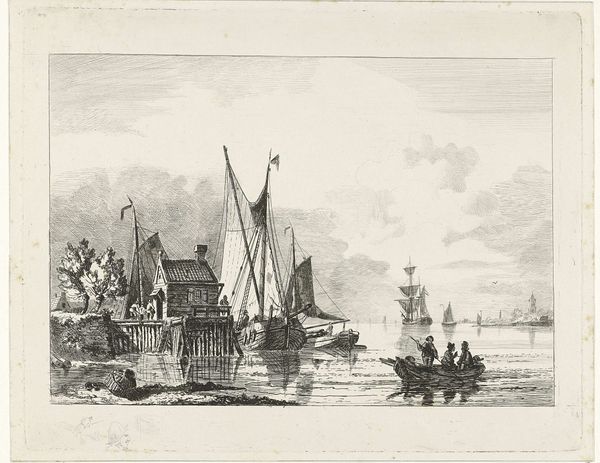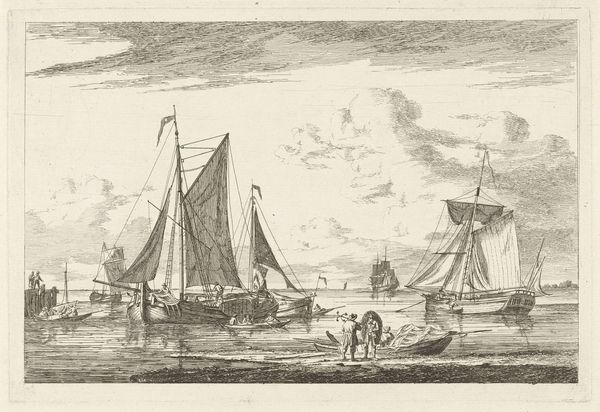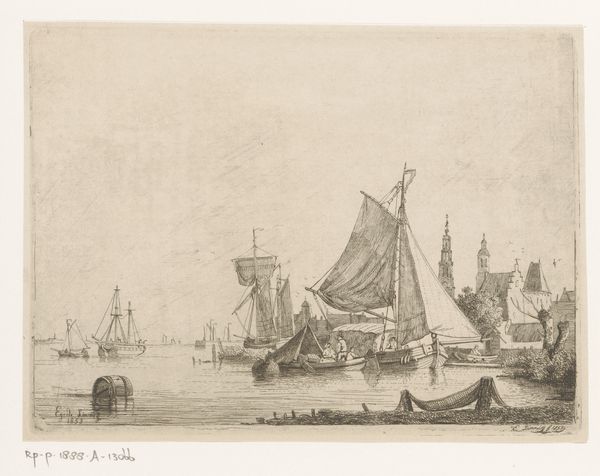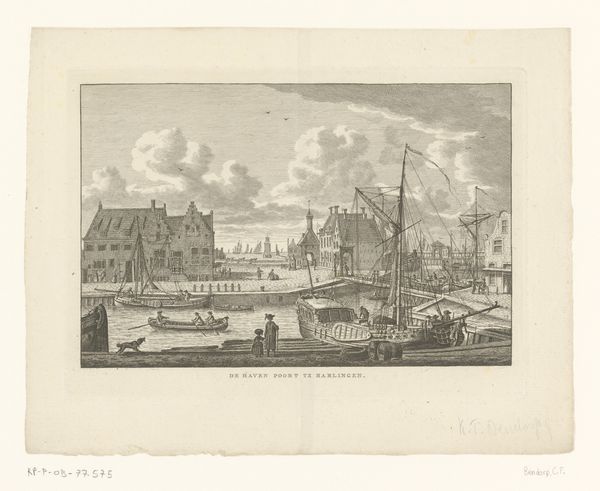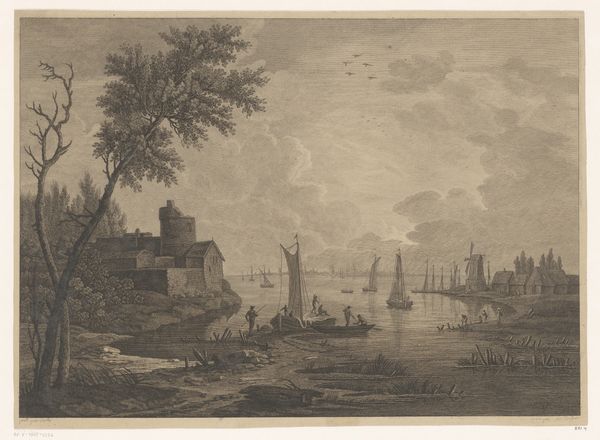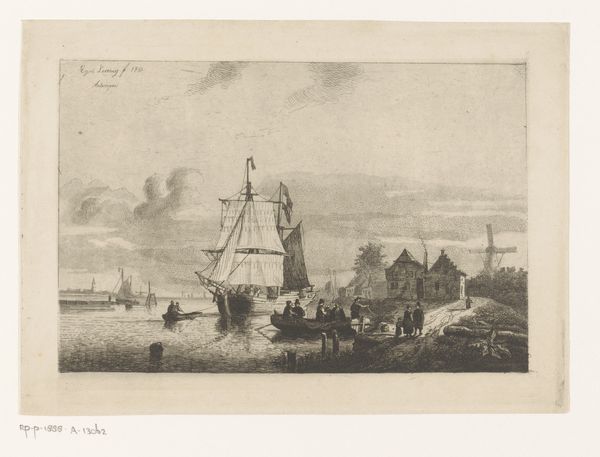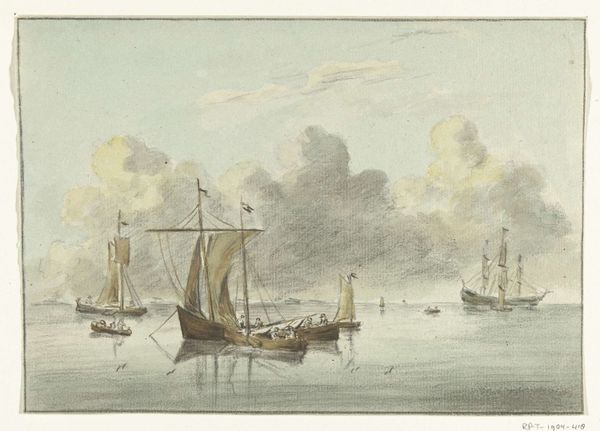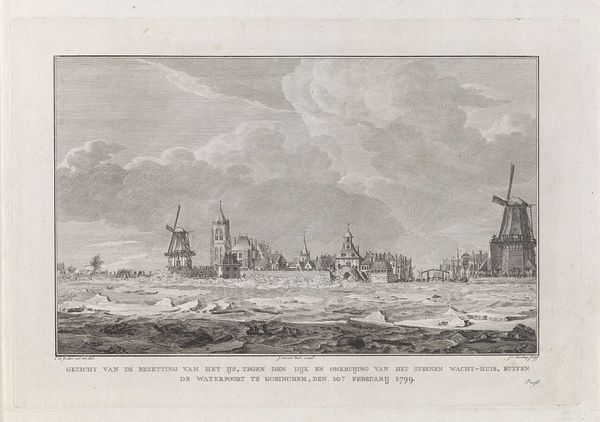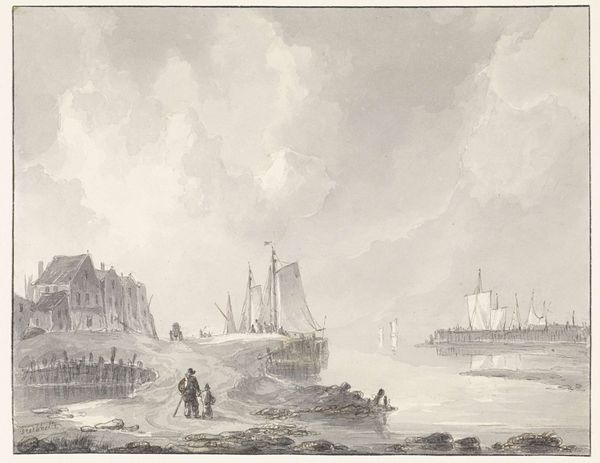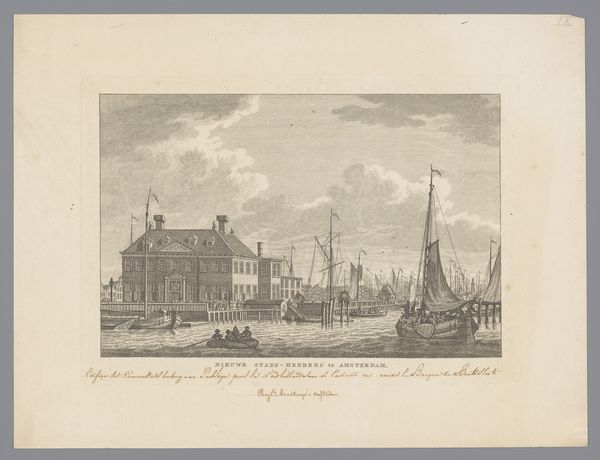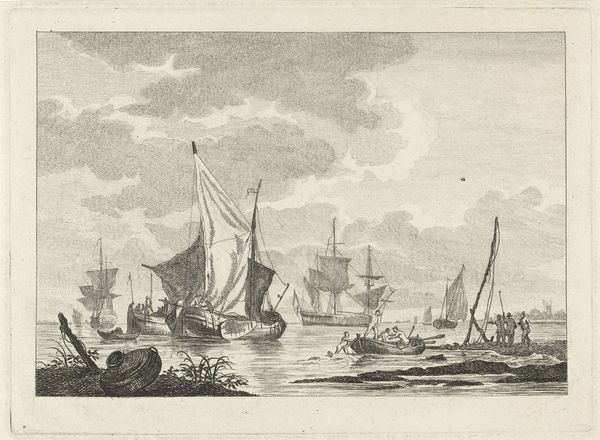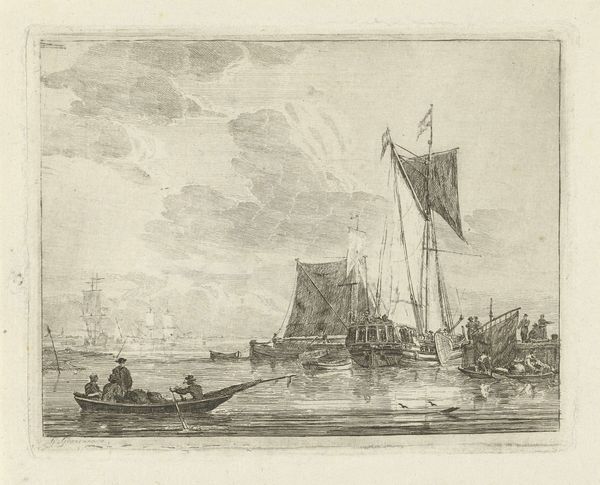
Dimensions: height 204 mm, width 260 mm
Copyright: Rijks Museum: Open Domain
Curator: Mathias de Sallieth's print, "River View with Boats," made sometime between 1764 and 1791, presents a detailed river landscape bustling with maritime activity. Editor: It feels strangely serene despite the apparent activity, a quiet observation of labour and leisure existing side by side. Curator: The engraving and etching techniques allow for a remarkable range of tonal variation. Note the careful articulation of the water's surface versus the intricate textures of the buildings and foliage. The linear quality emphasizes the scene's perspectival depth, directing the viewer’s eye. Editor: It speaks to the evolving socio-economic landscape of the Dutch Republic at the time. We are offered a glimpse into its dependence on maritime trade. See the diversity of figures and vessels that reflects both commercial industry and emergent forms of tourism. Note too, who is absent. This port town undoubtedly relies on labor from enslaved peoples, whose presence remains hauntingly unacknowledged. Curator: Interesting point. Certainly, one could focus on what is missing but consider the artist's careful compositional arrangement, and note the play of light across the water and structures. De Sallieth successfully created visual harmony in the scene through repeated triangular forms such as the sails of the boats and even the pointed roofs in the distance. Editor: Precisely, that harmony acts as a powerful masking tool. De Sallieth has created a picturesque narrative designed to reinforce the colonial paradigm, where the Dutch republic profits. Look at the prominent figures casually engaging in commercial exchange at the shore while untold labor exploitation makes that prosperity possible. It presents a skewed view, deliberately omitting elements which might shatter this seemingly peaceful facade. Curator: I can certainly appreciate the different interpretation. It offers an unexpected consideration regarding the politics of representation. Editor: This has been incredibly productive, examining both its compositional integrity and the critical historical elements embedded within the work.
Comments
No comments
Be the first to comment and join the conversation on the ultimate creative platform.
